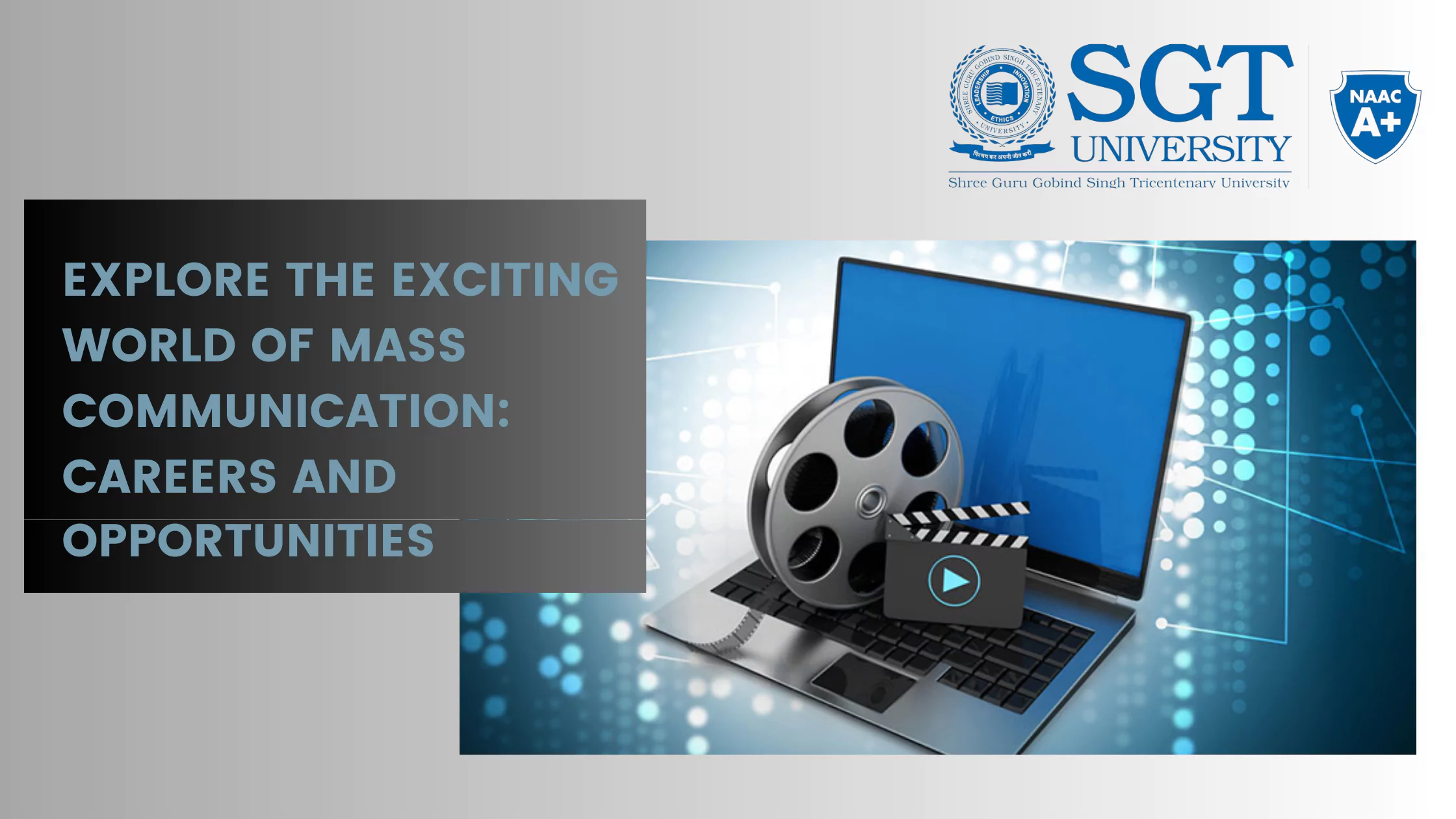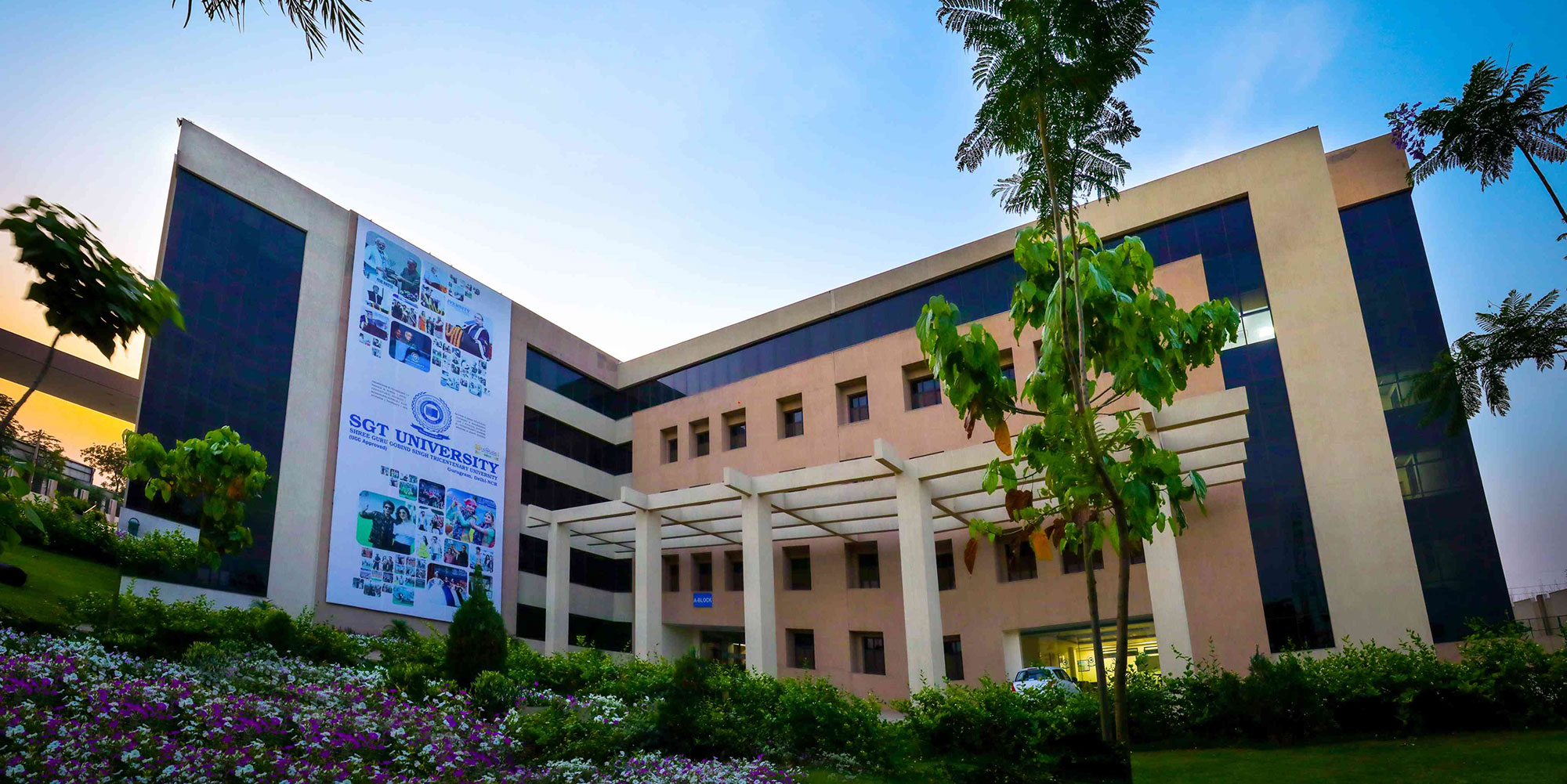Explore the Exciting World of Mass Communication: Careers and Opportunities
Updated on: August 29, 2024

Introduction
Do you have the dream of being engaged in storytelling, creativity and the capabilities of information? If you’re interested in a career in mass communication such as a News Anchor, an online marketer, or even a Video Game Designer these courses can be your gateway to a fabulous job. These exciting fields are a part of today’s world and focus on how people exchange information and communicate. Social media, podcasting and new journalism, scriptwriting and filmmaking – the list is endless and so it should be. If you are interested in a career in mass communication or media technology, you will find this type of job ideal for you!
About Mass Communication
Mass Communication is all about disseminating information and utterances that are of interest to many people. It is the means through which news, entertainment, and messages are shared with large audiences at any given time. This involves the use of television, radio, newspapers, the internet, and social media to pass information within the shortest time possible. It is almost impossible to escape from it as it is present in the shows we watch, the adverts we see, and even the news we read.
Whether it is to educate, convince, or entertain, Mass Communication shapes our perception of reality and brings people from different places and backgrounds closer together.
Importance of Studying Mass Communication in the Digital Era
Mass communication has become increasingly relevant in today’s society, given the widespread use of smartphones, social media platforms, and the internet in general. Our ability to disseminate and receive information has been transformed in the digital era, making mass communication skills essential across almost all professions and pursuits.
Studying mass communication equips us with the knowledge to develop and disseminate messages, differentiate between credible and fake news, and navigate social media platforms. It enhances our ability to connect with people from different parts of the world and share knowledge using new technologies.
If your career goal is to become a journalist, work in advertising, or simply be a savvy media consumer, majoring in mass communication opens doors to success in our rapidly advancing world.
About the Mass Communication and Media Technology
Mass Communication is all about disseminating information and utterances. The School of Mass Communication and Media Technology (SMCF) at SGT University, one of the top mass communication colleges for learning about journalism and media in India, is located in a rapidly growing city that's becoming a major tech hub.
At SMCF, students learn both the latest ideas about media and get hands-on practice, which helps them get ready for jobs in the ever-changing world of media. The university covers everything needed to succeed in today's media industry.
One of the best aspects of SMCF is its strong connections with real media companies. The school collaborates with many leading media organizations, providing students with insights into the latest industry trends.
Students also have the opportunity to meet renowned journalists and media experts who visit to give talks and conduct workshops. This exposure helps students understand the realities of working in media and enables them to build valuable connections for future job opportunities.
By combining classroom learning with real-world experiences, SMCF ensures its students are well-prepared for successful careers in the media industry.
List of Courses Offered by SGT University
- Bachelor of Arts (Journalism and Mass Communication)
- Masters of Arts (Journalism and Mass Communication)
- Doctor of Philosophy (Ph.D. in Journalism and Mass Communication)
Why Choose SGT University?
When pursuing Mass Communication and Media Technology courses, SGT University stands out as the best Mass Communication college in Haryana. The university's commitment to academic excellence, state-of-the-art facilities, and industry partnerships make it an ideal choice for aspiring journalists.
SGT University has established itself as one of the best mass communication colleges in Gurgaon, offering a world-class education in law. Recognized by the UGC and founded in 2013, the university aims to advance research, innovation, and multidisciplinary education.
The National Assessment and Accreditation Council (NAAC) has granted SGT University, which covers more than 70 acres, an A+ ranking. As one of the top Mass Communication colleges in Delhi NCR, SGT University boasts a team of experienced faculty members who are experts in their respective fields. They bring a wealth of knowledge and real-world experience to the classroom, ensuring that students receive a well-rounded education.
Admission Process of Mass Communication
The admissions process at SGT University, the best mass communication college in Haryana, is designed to be straightforward and student-friendly. Prospective students must first meet the eligibility criteria and then apply both online and offline.
Historical Perspective of Mass Communication
Mass Communication and Media Technology are no longer a dream as they have evolved over the years. Originally, people conveyed messages and information using factors like town criers, handwritten letters, printed books, etc.
Technological advancements only got better with time, and people found other methods of addressing many people at once. Newspapers and magazines could be produced more easily with the help of a printing press. Arriving next was radio, which enabled individuals to listen to news and entertainment directly at their homes.
Through television, moving pictures along with sound became accessible to millions of individuals. In the modern, more recent period, technology has changed everything once more – with the use of the internet and smartphones, individuals can communicate with people from all over the world in a matter of seconds.
Every new technology brought about a change in the way people communicate, get information, and even be entertained. This history enables us to understand the ways through which Mass Communication and Media Technology have developed and might be developing now.
About the Digital Revolution in Mass Communications
Communication and sharing of information have received a drastic turn through the coming of the digital world. I think it is a big wave that has hit the world of Mass Communication and Media Technology.
Earlier, the only forms of media through which people received their information and entertainment were things such as TV, radio, and newspapers. But today, with the help of the internet and intelligent devices, people can get the necessary information at any time. Social networking sites, video-sharing platforms, and online newspapers and magazines have also become essential aspects of our lives.
The advancement in technology has allowed anybody to be able to produce these works of art and be able to share them with people worldwide. It has also transformed how companies market their products, how politicians engage with voters, and how people communicate with loved ones.
Technology has taken communication to another level by making it quicker, more innovative, and more individual than anyone could have imagined, altering the very essence of Mass Communication and Media Technology.
Modern Trends and Innovations in Mass Communications
The modern trends and innovations in Mass Communication and Media Technology are as follows:
- Social Media Dominance: Social media has also been regarded as a popular means through which people share news, entertainment, and personal experiences including Facebook, Instagram, and TikTok.
- Streaming Services: Companies like Netflix, YouTube, and Spotify are completely revolutionizing our access to media, giving buyers the ability to watch or listen to something at a time that is convenient for them.
- Mobile-First Content: Today, since most people use their smartphones to access content, it is created in a way that is fit for small screens.
- Artificial Intelligence: Recommendations for content to be provided as per the users’ preference are being generated by AI, and the use of this technology is even in writing articles for news websites.
- Virtual and Augmented Reality: They are defining new techniques through which media can be consumed, namely computer games, virtual tours, etc.
- Podcasting: It has returned with a bang and now podcasts are available on all topics one could think of.
- Influencer Marketing: Through the use of social media, this marketing approach has turned out to be common for companies.
- Data-Driven Journalism: This trend highlights the incorporation of data analytics in the process of news production.
- Interactive Content: People are actively getting involved via quizzing, polling, or just watching an engaging video.
- Live Streaming: Video hosting services that enable live streaming have been adopted particularly for events, gaming, and sharing streams.
- Blockchain in Media: This technology is used in such applications as copyright protection, confirmation of news, and other purposes.
- Voice-Activated Devices: Smart speakers and voice assistants are remodifying how people get information and manage content.
- Journalist
- Public Relations Specialist
- Media Planner
- Broadcast Producer
- Social Media Manager
- Content Creator
- Media Analyst
- Advertising Executive
- Film and Video Editor
- Corporate Communications Manager
The Future of Mass Communication
The future of mass communication appears to be bright and promising. As technology improves, so do the ways through which the sharing of information among people takes place. There may be more focused content—literally, news and entertainment for your consumption that is designed for you and you alone.
Such advancements as, virtual and/or augmented reality might become part of the new normal, through which one would be able to fully live news and or stories. New technologies like Artificial Intelligence AI might be used to generate and disseminate content and even assist in identifying fake news. The role of the producer and consumer of the media might also come closer where more people are becoming the producer or at least contributors – the citizen journalists.
And we’ll probably witness new platforms and technologies, which are beyond our imagination right now. Thus, the development of mass communication’s future is likely to be oriented towards the availability, interactivity, and appeal of information for all.
At the same time media culture will raise increasing questions regarding privacy, ethical questions and the social influence of media. For the newcomers it signifies that there will be a vast number of prospects and equally significant, there will be a lot of innovation and much to discover, but one must embrace the fact that things change rapidly.
Diverse Career Opportunities after Mass Communications
There are various career opportunities after completing Mass Communication and Media Technology. Here are some of the options:
Conclusion
In conclusion, a career in Mass Communication and Media Technology offers a dynamic and ever-evolving landscape filled with diverse opportunities. As technology advances and the digital world expands, the ability to effectively communicate, create, and analyze content becomes increasingly valuable.
Whether you aspire to be a journalist, social media manager, or digital marketer, the skills gained in this field will prepare you to navigate and shape the future of media. SGT University, one of the best mass communication colleges in Gurgaon, provides an excellent foundation with its cutting-edge programs and industry connections, ensuring that students are well-equipped for the challenges and innovations ahead.
Embrace the potential of this field, and you'll find yourself at the forefront of how we connect, inform, and inspire in the digital age.

